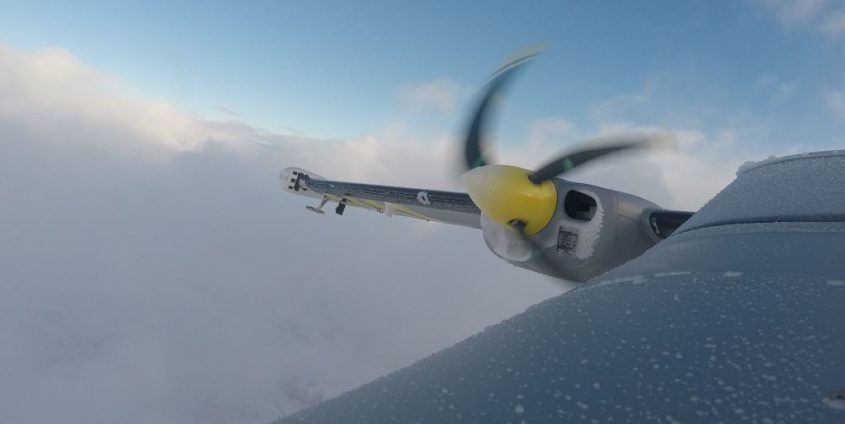New technology to determine ice on aircraft
In-flight icing of aircraft wings represents one of the biggest safety risks in aviation. Researchers have developed new wireless sensors allowing improved detection of ice formation.
When flights take place during bad weather conditions, planes inevitably spend extended periods flying through the cloud layer. With exterior temperatures below freezing – given the typical flight altitudes, this is frequently the case, even during the summer months – a dangerous process of ice formation can take place on the wings of the aircraft. This may have a negative effect on the flight characteristics, even leading to the aircraft crashing in extreme cases.
Researchers have now developed a sensor system that offers assistance with the detection of ice formation. The technology is based on sensors similar to those used on the blades of wind turbines. One of the innovative aspects lies in the design of the new sensors, which are significantly thinner and can therefore be better adapted to the aerodynamics of an aircraft. “The sensors measure the temperature and the degree of icing and wirelessly transmit this information to a receiving unit in the cockpit”, Hubert Zangl explains. He was the University of Klagenfurt (Institute of Smart Systems Technology) representative working on this project. The project team focused intensively on the thermal behaviour of the sensor, on the interactions with other components such as the heating elements, and on the accuracy of the temperature measurements taken on the wing surface. Another part of the project was devoted to achieving greater precision in the measurement of air stream on the surface and to performing simulations of the ice formation process. The construction of the antennae, required to ensure the best possible radio contact to the receiving unit, represented a particular challenge.
Funded by the Austrian Research Promotion Agency (FFG), the project was carried out jointly with eologix sensor technology gmbh, FH JOANNEUM GmbH (Institute of Electronic Engineering) and Villinger GmbH (de-icing systems for the aviation industry). Testflights were carried out by Airborne Technologies. According to Hubert Zangl, the insights gained can be used in numerous different fields: “The sensor is flexible in terms of its installation and dimension, and consequently it is suitable for use in a vast range of situations.”
Photo: (c) www.airbornetechnologies.at
Studying technology at the Universität Klagenfurt
Research and teaching excellence is what sets Alpen-Adria-Universität Klagenfurt’s technology programmes apart. Established in 2007, the Faculty of Technical Sciences prides itself on its exceptional student-supervisor relationships, which facilitate continuous, profitable exchange between tutors and students at all levels. Our technology programmes, which have a large practical component and focus on our key strengths (e.g. Informatics, Information Technology and Technical Mathematics), open up a world of opportunities for our students. And if you decide to take a Joint or Double Degree, you can also gain new experience overseas by taking a semester abroad or attending a summer school. More












